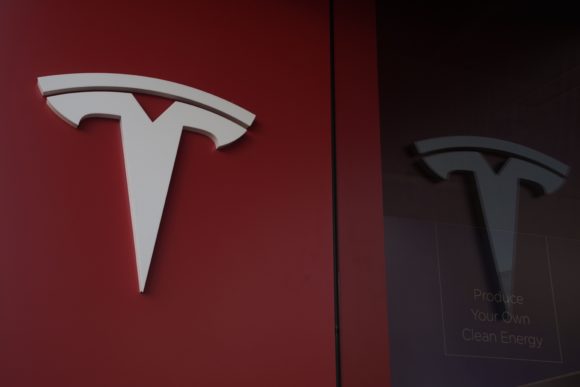Elon Musk promised to pump out robotaxis in high numbers when Tesla Inc. unveiled prototypes of its Cybercab last week.
There’s a big problem with that: US rules won’t allow it.
Automakers must secure permission from the National Highway Traffic Safety Administration before putting cars on the road that lack a steering wheel or other controls required by US auto safety rules. If Tesla were to overcome that hurdle — which is by no means guaranteed — it could only put a few thousand robotaxis on the road in a given year, effectively rendering its slick self-driving taxi little more than a niche product.
“Unless Congress increases this limit, as several failed bills would have done, exemptions aren’t a viable route for a mass manufacturer,” said Bryant Walker Smith, a University of South Carolina law professor and autonomous vehicle expert.
Regulatory hurdles were one of multiple issues Musk sidestepped during his much-anticipated unveiling of the robotaxi, billed as a pillar of the Tesla chief executive officer’s push into robotics and artificial intelligence.
NHTSA has long permitted manufacturers to deploy 2,500 vehicles per year under a granted exemption, a tiny total for a company that sold nearly half a million cars last quarter alone. Such a low number also contrasts with what Musk told investors last week, when he said Tesla would “make this vehicle in very-high volume.”
Musk last week said Tesla would first allow Model Y and Model 3 drivers in Texas and California to use their car’s suite of automated driving aids without supervision starting next year. The CEO then said the company expected to start producing Cybercabs in 2026, while cautioning that he tends to be “a little optimistic with timeframes.”
The product launch didn’t address how Tesla will make the leap from selling advanced driver-assistance features to fully autonomous vehicles, and whether Tesla would operate its own fleet of Cybercabs.
Going that route presents an uncertain path. General Motors Co. in early 2022 petitioned NHTSA for an exemption to field a driverless shuttle without a steering wheel and other human-centric features through its Cruise self-driving unit. The automaker ultimately pulled the plug in July after the agency didn’t act on the request for more than two years.
As of Friday, Tesla hadn’t requested an exemption for the Cybercab, NHTSA said at the time. The agency to date has granted only one such application, in 2020, when it allowed startup Nuro to deploy low-speed, autonomous delivery vehicles designed to carry goods rather than people.
States, which have authority over the operation of vehicles on their roads, may present their own hurdles. For example, Tesla hasn’t applied for a driverless testing or deployment permit required in California, the company’s original home and where self-driving startups such as Alphabet Inc.’s Waymo and GM’s Cruise unit have fielded robotaxis.
Although Tesla since 2015 has held a permit to test autonomous technology with a human safety driver present, it hasn’t reported using it since 2019, a spokesman for the California Department of Motor Vehicles said.
“I think the bigger question are the state permits,” said Mary “Missy” Cummings, a George Mason University engineering professor and former NHTSA adviser who has been critical of Tesla’s driver-assist features known as Autopilot. Until Tesla provides the state with testing data, “they are years away from obtaining the necessary permits in California.”
Other states have a more permissive approach. Texas, now home to Tesla’s headquarters, has no unique permitting or registration requirements for autonomous vehicles, according to the state’s motor vehicle department.
Smith, the law professor, said Tesla’s bigger challenge is a technical one: fielding safe self-driving technology. The company “has been claiming for a decade” to be close to delivering cars that are fully capable of driving themselves that it has yet to deliver, he said.
“Any imminent regulatory hurdles are because Tesla does not have and cannot show a reasonably safe automated driving system,” he said.
Top photo: A Tesla Inc. logo is reflected in the glass of a closed showroom at a nearly-empty shopping mall in San Diego, California, U.S., on Tuesday, May 5, 2020. Photographer: Bing Guan/Bloomberg.
Was this article valuable?
Here are more articles you may enjoy.


 Standard Chartered Settles $2 Billion Iranian Sanction Suit in London
Standard Chartered Settles $2 Billion Iranian Sanction Suit in London  Florida And East Coast Will See Big Losses From More Cat 5 Storms, Researchers Say
Florida And East Coast Will See Big Losses From More Cat 5 Storms, Researchers Say  Asahi Sales Drop Worsens as Cyber Hack Disruption Lingers
Asahi Sales Drop Worsens as Cyber Hack Disruption Lingers  Losses Top $20 Billion in Asia Floods as Climate Risks Grow
Losses Top $20 Billion in Asia Floods as Climate Risks Grow 